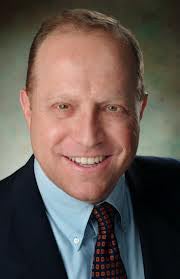 “In November, the head of the Americans for the Arts came to Eugene to present the results of a national arts and economics study in which UO arts and administration students played a key role. Randy Cohen (photo at left), vice president of research and policy for Americans for the Arts, presented the findings to the Eugene arts community.
“In November, the head of the Americans for the Arts came to Eugene to present the results of a national arts and economics study in which UO arts and administration students played a key role. Randy Cohen (photo at left), vice president of research and policy for Americans for the Arts, presented the findings to the Eugene arts community.
The UO’s Center for Community Arts and Cultural Policy (CCACP) was one of three local stakeholders – the others being the City of Eugene and the Arts & Business Alliance of Eugene – that executed the Eugene Arts and Economic Prosperity study as part of the Americans for the Arts & Economic Prosperity IV study. But the CCACP’s role may have proven most important.
The community had been having a difficult time getting volunteers to gather intercept survey responses,” said Fred Crafts, a longtime arts critic in Eugene and member of the Arts & Business Alliance of Eugene. “The future for the survey looked bleak and we could have failed. Then, Tina Rinaldi marshaled UO students to take over that function. They bailed us out. They jumped in and brought in a record number of surveys.”
From the students’ efforts, the community now knows that Eugene benefits from an economic impact of $45.6 million per year from its nonprofits arts and cultural organizations, which is larger than the national average for similar-sized population centers. Additionally, the study found that the nonprofit arts sector employs 984 full-time equivalent jobs. An unexpected finding was that only 15 percent of arts and culture event attendees were from outside Lane County.
Rinaldi– managing director of the Arts and Administration (AAD) Program, founding member of the Arts & Business Alliance of Eugene, and lead organizer of data collection in the community – fully understood the importance the survey’s results for the community.
“The study was able to be completed because we had students who were interested in collecting the data in the community,” said Rinaldi. “It is a great opportunity to showcase student activity as it relates to a local research initiative that is part of a larger national longitudinal research initiative from the largest arts advocacy and cultural policy organization – American for the Arts – in the country.”
To complete the data collection, Rinaldi collaborated with Associate Professor Patricia Dewey’s fall 2011 “Cultural Policy” course to prepare ten AAD students for the study’s data collection throughout the 2011-2012 academic school year. Dewey had her students complete a research study comparing different arts-related economic impact studies that have been conducted around the country.
“These research projects allowed the students to better understand the whole world of economic impact studies, the purposes for them, and the arguments for and against,” said Rinaldi. “This allowed the students involved in the data collection for this study to have a deeper understanding of economic impact as it relates to cultural policy, compared to other cohorts of students.”
Thirty-one percent of Eugene’s nonprofit groups volunteered to take part in the study. This did not include some large organizations, such as the John G. Shedd Institute for the Arts and the WOW Hall. However, the data was not extrapolated, which means the study’s results may not acknowledge Eugene’s full arts and cultural organizations economic impact.
“The $45 million of economic impact in the community is literally only the impact of those organizations that participated in the study,” said Rinaldi. “We know the study’s result is a conservative number, and the real economic impact of the nonprofit arts in our community is larger than the study’s findings.”
The study’s stakeholders and larger community has just begun conversations about what the study means and how to use the data the students collected. One area Rinaldi and other study participants agree on is the creation of a “cultural district” downtown with links to UO’s cultural assets, such as the Jordan Schnitzer Museum of Art and the development of a collaborative cultural tourism initiative that will attract participants from out of the area.
One thing is for certain, however: The UO AAD Program and the CCACP will continue to be a strong voice and collaborator in future studies and developments in Eugene’s nonprofit arts and culture scene. “The willingness of the UO AAA faculty, staff, and students to take on community projects pays huge benefits to all of us. They make our community a better place in which to live,” said Crafts. “Every project they have done has been done professionally and cheerfully.”
Story by Joe McAndrew
